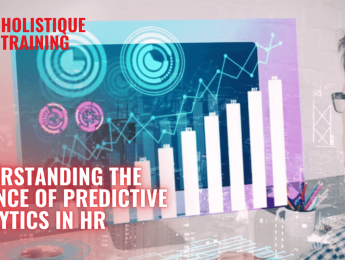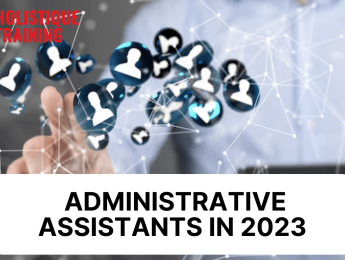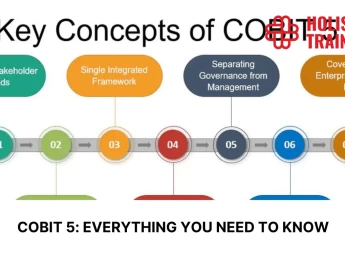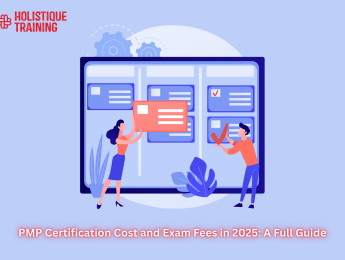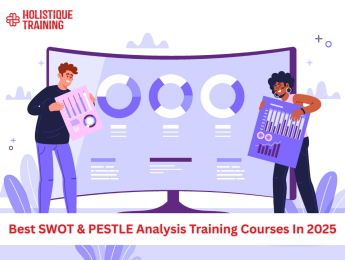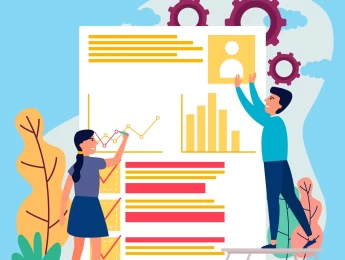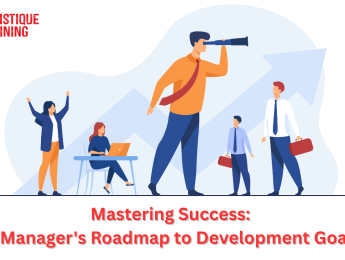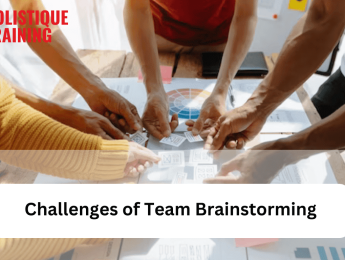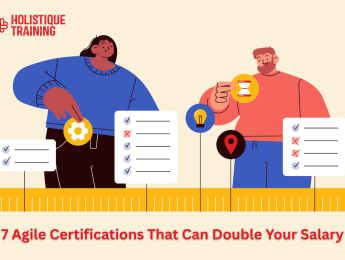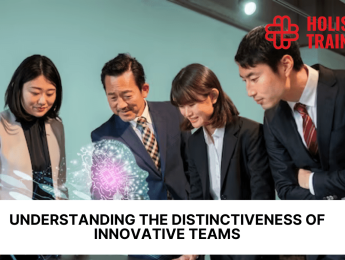- Table of Contents
- Understanding the Essence of Predictive Analytics in HR
- Diving Deep into the Differences Between Traditional HR and Predictive HR Analytics
- a- Basis of Decision-Making
- b. Approach to Problem-Solving
- c. Employee Engagement and Retention
- d. Strategic Planning and Decision-Making
- The Significance of Predictive HR Analytics
- Strategic Workforce Planning
- Precise Talent Acquisition
- Employee Engagement and Retention
- Personalised Employee Development
- Optimised Compensation and Benefits
- Mitigating Bias
- Enhanced Organisational Agility
- Measurable ROI
- Navigating the Predictive Analytics Process in HR
- 1. Data Collection
- 2. Data Cleaning and Preparation
- 3. Feature Selection
- 4. Model Building
- 5. Validation and Testing
- 6. Deployment and Monitoring
- Essential Tools for HR Predictive Analytics
- People Analytics Platforms
- Machine Learning Libraries
- Data Visualisation Tools
- Implementing a Successful Predictive HR Analytics System
- 1. Define Clear Objectives
- 2. Access to Quality Data
- 3. Data Privacy and Ethics
- 4. Expertise and Training
- 5. Start Small and Scale
- A Glimpse of Real-Life HR Predictive Analytics
- The Future of HR Predictive Analytics
- Advanced Machine Learning and AI Integration
- Enhanced Employee Experience
- Predictive Talent Acquisition
- Real-time Predictions
- Predictive Workforce Planning
- Ethical AI and Bias Mitigation
- Augmented Analytics
- Conclusion
The realm of Human Resources (HR) is undergoing a profound transformation, driven by the convergence of data and strategic decision-making. In an era where tradition meets technology, HR practices are evolving from reactive to proactive, from intuitive to data-driven. Amidst this metamorphosis, one innovation stands out as a guiding light: Predictive HR Analytics. This groundbreaking methodology blends the art of HR with the science of data analytics, enabling organisations to forecast trends, optimise operations, and make informed choices. In this comprehensive exploration, we journey into the heart of predictive HR analytics, understanding its significance, unfolding its implementation process, unveiling essential tools, and even immersing ourselves in a real-world example that illuminates its potential to reshape the HR landscape.
Understanding the Essence of Predictive Analytics in HR
At its core, predictive analytics in HR involves the use of historical data, statistical algorithms, and machine learning techniques to identify patterns and trends, enabling organisations to predict future outcomes. This methodology shifts HR from a reactive stance to a proactive one, enabling them to anticipate various scenarios and act accordingly. Unlike traditional HR practices that rely on gut feelings and historical trends alone, predictive HR analytics dives deeper, uncovering hidden insights that inform critical decision-making.
Diving Deep into the Differences Between Traditional HR and Predictive HR Analytics
Traditional Human Resources (HR) practices have long been rooted in experience, intuition, and historical data. However, the advent of predictive HR analytics has revolutionised the HR landscape, bringing in a new era of strategic decision-making backed by advanced data analysis and predictive modelling. Here are the key differences between traditional HR and predictive HR analytics:
a- Basis of Decision-Making
Traditional HR: Traditional HR practices rely on past experiences, human judgement, and established protocols to make decisions. HR professionals often draw on their expertise and intuition when handling various HR tasks such as recruitment, employee engagement, and talent management.
Predictive HR Analytics:Predictive HR analytics, on the other hand, uses historical data and sophisticated algorithms to forecast future trends and outcomes. It employs statistical analysis and machine learning techniques to extract actionable insights from large datasets. Predictive HR analytics enables HR professionals to make proactive and data-driven decisions, enhancing the overall effectiveness of HR strategies.
b. Approach to Problem-Solving
Traditional HR:Traditional HR approaches problem-solving reactively. HR professionals address issues as they arise, relying on their experience and established HR practices to resolve challenges.
Predictive HR Analytics: Predictive HR analytics takes a proactive approach to problem-solving. By analysing historical data, identifying patterns, and predicting future outcomes, HR professionals can anticipate potential issues before they escalate. This proactive stance enables HR to implement preventive measures, optimise processes, and strategically plan for the future, thereby minimising risks and enhancing organisational efficiency.
c. Employee Engagement and Retention
Traditional HR: Traditional HR methods for improving employee engagement often involve general strategies and best practices, which may or may not be tailored to individual employee needs. Retention efforts are typically reactive, addressing issues after employees have shown signs of disengagement or dissatisfaction.
Predictive HR Analytics: Predictive HR analytics can identify specific factors influencing employee engagement and satisfaction by analysing data patterns. It enables HR professionals to proactively address these factors, providing personalised solutions to enhance engagement and reduce turnover. Predictive analytics allows HR to foresee potential attrition risks and implement targeted interventions to retain top talent.
d. Strategic Planning and Decision-Making
Traditional HR:Traditional HR approaches strategic planning based on historical data and industry best practices. While experience plays a crucial role, decisions are often made without in-depth predictive insights into future workforce trends or challenges.
Predictive HR Analytics:Predictive HR analytics empowers strategic planning with accurate forecasts and predictive modelling. HR professionals can simulate different scenarios, such as the impact of talent acquisition strategies or changes in employee benefits, to make informed decisions. This data-driven approach enables HR to align its strategies with organisational goals, ensuring a more agile and responsive workforce management.
In summary, while traditional HR practices have their merits, predictive HR analytics represents a paradigm shift, allowing HR professionals to harness the power of data to make proactive, strategic, and personalised decisions. By integrating predictive analytics into HR processes, organisations can optimise their talent management strategies, improve employee experiences, and gain a competitive edge in today's dynamic business environment.
Table 1: Key differences between traditional HR and predictive HR analysis
Aspect | Traditional HR | Predictive HR Analytics |
Decision-Making Basis | Experience, intuition, protocols | Data analysis, algorithms, forecasting |
Problem-Solving | Reactive, experience-driven | Proactive, data-driven, preventive |
Employee Engagement | General strategies, reactive | Personalised, data-pattern-driven, anticipatory |
Strategic Planning | Historical data, best practices | Predictive modelling, agile decision-making, scenario simulation |
The Significance of Predictive HR Analytics
In the dynamic landscape of modern business, where agility and adaptability are paramount, HR departments are no longer confined to traditional administrative roles. They have evolved into strategic partners, shaping organisational success by harnessing the potential of predictive HR analytics. Let's delve deeper into the multifaceted significance of this transformative approach:
Strategic Workforce Planning
Predictive HR analytics empowers organisations to move beyond reactive workforce planning. By analysing historical data and identifying patterns, HR professionals can forecast future workforce needs accurately. This strategic foresight ensures that organisations have the right talent in place when and where it's needed, reducing the risk of skills gaps and overstaffing.
Precise Talent Acquisition
Gone are the days of sifting through stacks of resumes hoping to find the perfect candidate. Predictive HR analytics streamlines the recruitment process by evaluating the attributes of successful hires from the past. This data-driven approach allows HR to identify the characteristics, skills, and experiences that correlate with high-performing employees, resulting in more targeted and effective hiring decisions. Not only that, predictive HR analytics also revolutionises the pre-recruitment assessment process by precisely identifying candidates who are prone to long-term commitment or potential short-term departures.
Employee Engagement and Retention
Employee turnover can be a significant drain on resources, both in terms of time and money. Predictive HR analytics provides insights into the factors that contribute to attrition, allowing organisations to proactively address these issues. By identifying employee disengagement or dissatisfaction early on, HR can implement interventions to retain valuable talent.
Personalised Employee Development
Every employee is unique, with distinct strengths and areas for improvement. Predictive HR analytics helps HR departments create personalised development plans based on individual skills, preferences, and potential. This approach fosters continuous learning and growth, resulting in a workforce that's better equipped to drive innovation and achieve organisational goals.
Optimised Compensation and Benefits
Determining competitive compensation packages can be challenging. Predictive HR analytics takes the guesswork out of this process by analysing market trends, industry benchmarks, and internal performance data. This ensures that employees are fairly compensated, improving job satisfaction and reducing the risk of turnover due to compensation issues.
Mitigating Bias
Traditional HR processes are susceptible to unconscious biases that can influence hiring and promotion decisions. Predictive HR analytics introduces objectivity by relying on data-driven insights rather than relying solely on subjective judgments. This helps in creating a more diverse and inclusive workforce.
Enhanced Organisational Agility
In a rapidly changing business environment, agility is essential. Predictive HR analytics equips organisations with the ability to adapt swiftly by forecasting skill gaps and aligning talent strategies with evolving market demands.
Measurable ROI
Implementing predictive HR analytics isn't just a strategic move; it's an investment with tangible returns. Organisations that leverage predictive analytics often witness improved employee performance, reduced turnover, increased productivity, and enhanced bottom-line results.
In essence, predictive HR analytics serves as a compass, guiding HR professionals through the intricate maze of talent management. It offers a holistic view of the workforce, enabling HR to make informed decisions that resonate with broader organisational objectives. By shifting from hindsight to foresight, HR departments position themselves as drivers of growth and innovation, fostering a culture where talent is nurtured, engaged, and empowered to achieve greatness.
Navigating the Predictive Analytics Process in HR
Predictive analytics in HR is a sophisticated process that utilises data-driven techniques to anticipate future outcomes, enabling HR professionals to make informed decisions and strategies. The process unfolds in several key steps:
1. Data Collection
HR departments start by gathering diverse data from numerous sources such as performance reviews, recruitment records, employee surveys, and other relevant platforms. The quality and comprehensiveness of this data form the foundation for meaningful analysis.
2. Data Cleaning and Preparation
Raw data is rarely perfect; it often contains errors, inconsistencies, or missing values. Data cleaning involves rectifying these issues by eliminating duplicates, correcting inaccuracies, and ensuring uniformity in format. This step is vital to ensuring the accuracy and reliability of subsequent analysis.
3. Feature Selection
Not all data points are equally relevant in predicting specific outcomes like employee turnover or performance. HR professionals need to identify the most significant features or variables that strongly influence the outcome they want to predict. This step ensures that the predictive model focuses on the most relevant aspects of the data.
4. Model Building
Statistical algorithms and machine learning techniques are applied to the prepared data to build predictive models. These models learn patterns and relationships within historical data and use this knowledge to make accurate predictions about future events. Choosing the right algorithms and methodologies is crucial to the model's success.
5. Validation and Testing
Predictive models must be rigorously tested to ensure their accuracy and reliability. This is done using data that was not part of the model-building process. By validating the model against unseen data, HR professionals can assess its generalisability and make necessary adjustments to improve its predictive power.
6. Deployment and Monitoring
Once a predictive model proves its reliability through testing, it is deployed in real-world HR scenarios. Continuous monitoring is essential to ensure that the model remains accurate as new data is collected and integrated. Monitoring helps detect any deviations between predicted outcomes and actual results, allowing HR professionals to refine the model or adjust strategies accordingly.
In essence, predictive analytics in HR empowers organisations to proactively address workforce challenges, optimise talent management, and enhance overall HR decision-making processes. By following these systematic steps, HR professionals can harness the power of data to gain actionable insights, ultimately fostering a more productive and engaged workforce.
Table 2: Challenges of predictive HR analytics
Essential Tools for HR Predictive Analytics
The field of HR predictive analytics is supported by a plethora of advanced tools that streamline the process and enhance accuracy. Some of the essential tools include:
People Analytics Platforms
These platforms offer comprehensive solutions for data collection, analysis, and visualisation. They often come equipped with pre-built HR analytics models that can be customised to an organisation's needs.
Machine Learning Libraries
Libraries likescikit-learn and TensorFlow provide a wide range of machine learning algorithms that can be used to build predictive models.
Data Visualisation Tools
Tools like Tableau and Power BI help transform complex data into easily understandable visualisations, aiding in decision-making and communication.
Implementing a Successful Predictive HR Analytics System
While the potential benefits of predictive HR analytics are undeniable, successful implementation requires careful planning and execution. Here are some tips to ensure a seamless integration:
1. Define Clear Objectives
Clear and specific objectives are the foundation of any successful predictive HR analytics initiative. Identify the HR challenges that are most critical to your organisation, such as reducing turnover, improving performance, or optimising hiring processes. Having well-defined goals enables focused efforts and ensures that the analytics efforts are aligned with organisational priorities.
2. Access to Quality Data
The accuracy and effectiveness of predictive models depend heavily on the quality of the data used. It's imperative to ensure that the data collected is accurate, relevant, and up-to-date. Clean, comprehensive, and well-organised data sets are essential for meaningful analysis. Regularly auditing and updating the data ensures that the predictions are based on the most recent and relevant information.
3. Data Privacy and Ethics
Handling employee data demands strict adherence to privacy regulations and ethical considerations. Establish robust protocols and security measures to safeguard sensitive information. Ensuring compliance with laws such as GDPR (General Data Protection Regulation) and respecting employee privacy rights are crucial. Transparency about how the data will be used and ensuring informed consent is vital in maintaining trust among employees.
4. Expertise and Training
Building expertise within your HR analytics team is essential. Invest in training programmes focused on data analysis, statistics, and machine learning techniques. Equipping your team with the necessary skills and knowledge empowers them to interpret data accurately, choose appropriate algorithms, and derive meaningful insights. Continuous learning and staying updated with the latest trends in HR analytics are also crucial in this rapidly evolving field.
5. Start Small and Scale
Instead of attempting to implement predictive analytics across the entire HR spectrum at once, start with pilot projects. Beginning on a smaller scale allows you to assess the feasibility, effectiveness, and potential challenges of the analytics system. Pilot projects provide valuable insights, allowing you to refine your approach and address any issues before scaling up. It also helps in minimising risks associated with large-scale implementation and ensures a more seamless integration process.
By following these steps and guidelines, organisations can effectively harness the power of predictive HR analytics. Through clear objectives, high-quality data, ethical practices, a skilled workforce, and a phased approach, businesses can gain actionable insights that enhance decision-making, improve employee experiences, and drive overall organisational success.
A Glimpse of Real-Life HR Predictive Analytics
To truly grasp the transformative potential of predictive HR analytics, let's delve into a real-life example. Consider a mid-sized technology company grappling with high employee turnover. By implementing predictive analytics, they analysed historical data to identify common factors contributing to employee attrition. Surprisingly, the analysis revealed that employees with longer commute times were more likely to leave. Armed with this insight, the company implemented flexible work arrangements and provided remote work options. As a result, employee satisfaction increased, turnover decreased, and productivity soared.
The Future of HR Predictive Analytics
Predictive HR analytics has emerged as a transformative force within human resources, offering unprecedented insights into employee behaviour, organisational trends, and workforce dynamics. As technology continues to advance at an unprecedented pace, the future of predictive HR analytics holds even more promise, reshaping the way businesses manage their talent and strategise their HR initiatives. Here are key aspects that highlight the trajectory of predictive HR analytics in the future:
Advanced Machine Learning and AI Integration
The integration of advanced machine learning algorithms and artificial intelligence (AI) technologies will enable predictive HR analytics to delve deeper into complex patterns within data. AI-driven models can process vast amounts of information, allowing HR professionals to make highly accurate predictions about employee performance, turnover, and even workforce sentiment.
Enhanced Employee Experience
Predictive analytics will play a pivotal role in enhancing the overall employee experience. By anticipating the needs and preferences of employees, HR departments can personalise benefits, training programmes, and career development initiatives. This personalisation not only boosts employee satisfaction but also fosters a more engaged and loyal workforce.
Predictive Talent Acquisition
Future HR analytics will revolutionise the way companies recruit talent. By analysing historical data and market trends, predictive models will identify the most suitable candidates for specific roles, significantly reducing time-to-hire and ensuring better cultural fit within organisations.
Real-time Predictions
The future of HR analytics lies in real-time predictions. With the integration of IoT devices and continuous data streams, HR systems will provide instant insights into employee performance, allowing for immediate interventions in areas such as productivity, well-being, and job satisfaction. Real-time data analysis will enable HR professionals to make agile decisions, responding promptly to evolving workforce needs.
Predictive Workforce Planning
Predictive analytics will empower HR departments to forecast workforce demands accurately. By analysing historical data alongside external factors like economic trends and industry shifts, organisations can proactively plan for changes in their workforce, ensuring they have the right talent in the right place at the right time.
Ethical AI and Bias Mitigation
As predictive HR analytics become more sophisticated, ensuringethical practices and mitigating biases in AI algorithms will be paramount. HR professionals will need to invest in robust ethical frameworks and algorithms that are designed to eliminate biases, ensuring fairness and equity in decision-making processes.
Augmented Analytics
Augmented analytics, combining machine learning and natural language processing, will simplify the complex data analysis process. HR professionals, without extensive data expertise, will be able to interact with data intuitively, gaining insights and recommendations effortlessly. This democratisation of data analysis will make HR analytics more accessible and actionable for a broader range of professionals within organisations.
In summary, the future of predictive HR analytics promises a landscape where data-driven insights are not just a tool but a fundamental component of strategic HR decision-making. By embracing these advancements, organisations will be better equipped to navigate the complexities of the modern workforce, fostering a workplace that is not only efficient and productive but also deeply attuned to the needs of its employees.
Conclusion
Predictive HR analytics isn't just a trend; it's a strategic imperative. The marriage of data and human resources holds the key to a future where decisions are made with precision, foresight, and impact. By embracing this approach, organisations can navigate the complex terrain of HR management, anticipate challenges, and create an environment where both employees and businesses thrive. As technology continues to evolve and data becomes more accessible, the potential of predictive HR analytics will only expand, offering limitless possibilities for those bold enough to embrace its potential.
If you're eager to dive deeper into this transformative realm and equip your HR department for the digital age, consider enrolling in our comprehensive course, ‘Digital Change in Your HR Department.’ This course empowers you with the skills and knowledge needed to harness the power of predictive analytics, navigate the complexities of HR transformation, and drive your organisation toward unparalleled success. Embrace change, seize the opportunity, and embark on a journey that will shape the future of HR.


